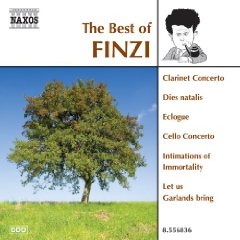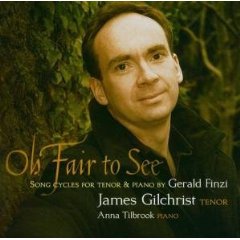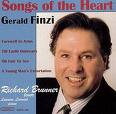A Young Man's Exhortation
Song Analysis
- Musical Analysis Section
- Audio Recordings Section
- Unpublished Analysis Excerpts
- Van der Watt - The Songs of Gerald Finzi (1901-1956) To Poems by Thomas Hardy
- Carlisle - Gerald Finzi: A performance Analysis of A Young Man's Exhortation and Till Earth Outwears, Two Works for High Voice and
- Denning - A Discussion and Analysis of Songs for the Tenor Voice Composed by Gerald Finzi with Texts by Thomas Hardy
- Rogers - A Stylistic Analysis of A Young Man's Exhortation, Opus 14, by Gerald Finzi to words by Thomas Hardy
- Bray - An Analysis of Gerald Finzi's "A Young Man's Exhortation"
- John Keston - Two Gentlemen from Wessex, The Relationship of Thomas Hardy's Poetry to Gerald Finzi's Music
Poet: Thomas Hardy
Date of poem: 1867 Westbourne Park Villas
Publication date: 1922
Publisher: Macmillan & Company
Collection: Late Lyrics and Earlier
History of Poem:
A Young Man’s Exhortation in the manuscript form was simply titled: “An Exhortation.”
(Purdy, 218) The poem is compiled in the collection of poems entitled: Late Lyrics and Earlier published by Macmillan & Co., on May 23, 1922. Hardy was 81 years old when the collection was published. (Bailey, 428) There are a total of 151 poems within the collection of which James Osler Bailey writes, "many reflect a mulling over of memories, the fruit of notebooks (at a time when he [Hardy] was making notes toward his biography), and the rediscovery of old poems rejected for previous volumes." (Bailey, 428) A Young Man's Exhortation is one of the earliest poems within Late Lyrics and Earlier. The exact date as to when A Young Man's Exhortation was written is unknown but Bailey and other authors record the Summer of 1867.
(Bailey, 452) With regards to Hardy's health at the time of his writing the poem, "A Young Man's Exhortation," his second wife, Florence Hardy records in The Early Life of Thomas Hardy that in late July of 1867 Hardy left London and traveled to Dorchester in order to regain his health. (Florence Hardy, 71) The poem was to have been written prior to Hardy's leaving London but again as to the exact date, it is unknown. The poem also predates Hardy's marriage to his first wife Emma. Hardy at the time was living in Adelphi Terrace and more specifically West Park Villas, a suburb of London when he wrote the poem. (Florence Hardy, 70) And as evidence of the poor living accommodations Hardy was enduring at West Park Villas in the Summer of 1867, Florence Hardy records: "Adelphi Terrace, as everybody knows, faces the river, and in the heat of summer, while Hardy was there, the stench from the mud at low water increased, the Metropolitan main-drainage system not having been yet constructed." (Florence Hardy, 70) Hardy was employed as an architect by Sir Arthur William Blomfield while living in London. (Wright, 363) Living in the city away from the pastoral setting that was Hardy's childhood home was particularly difficult for the poet. Mark Robert Carlisle in his dissertation on Gerald Finzi writes: "This was an emotionally charged year for Hardy; he toyed with the idea of becoming an actor, and actually appeared on the stage of Covent Garden. It was also in 1867 that he (Hardy) fell in love with his cousin, Tryphena Sparks, to whom he soon became engaged." (Carlisle, 85) James Osler Bailey suggests: "presumably Hardy in 1867 exhorted himself on the basis of ideas from the classics, art galleries, the theater, and poetry, much of it romantic." (Bailey, 453) Florence Hardy, offers a glimpse of Hardy's daily routine during his stay in London: "he [Hardy] had been accustomed to shut himself up in his rooms at Westbourne Park Villas every evening from six to twelve, reading incessantly, instead of getting out for air after the day's confinement." (Florence Hardy, 70) Bailey suggests, "under these circumstances he [Hardy] exhorted himself to seek ecstasy by living in 'the passing preciousness of dream.' " (Bailey, 454) Kenneth Marsden makes the suggestion in his text in which he discusses Hardy's poems that A Young Man's Exhortation may be a product of Hardy's use of juxtaposition in that he wrote about at the same time a poem entitled A Young Man's Epigram on Existence. (Marsden, 186) A Young Man's Epigram on Existence was written in 1866 while Hardy was living at 16 Westbourne Park Villas. (Wright, 363) The argument for juxtaposition seems weak when one considers A Young Man's Epigram on Existence was published in Time's Laughingstocks (1909) and if Hardy had meant the two poems to be juxtaposed it seems he would have wanted them released at the same time in the same collection. One cannot dispute they were written within one year of one another but as to whether or not Hardy concerned himself with juxtaposing these two poems it seems unresolved without his input.
Poem:
| 1 | CALL off your eyes from care | a | |
| 2 | By some determined deftness; put forth joys | b | |
| 3 | Dear as excess without the core that cloys, | b | |
| 4 | And charm Life’s lourings fair. | a | |
| 5 | Exalt and crown the hour | c | |
| 6 | That girdles us, and fill it full with glee, | d | |
| 7 | Blind glee, excelling aught could ever be | d | |
| 8 | Were heedfulness in power. | c | |
| 9 | Send up such touching strains | e | |
| 10 | That limitless recruits from Fancy’s pack | f | |
| 11 | Shall rush upon your tongue, and tender back | f | |
| 12 | All that your soul contains. | e | |
| 13 | For what do we know best? | g | |
| 14 | That a fresh love-leaf crumpled soon will dry, | h | |
| 15 | And that men moment after moment die, | h | |
| 16 | Of all scope dispossest. | g | |
| 17 | If I have seen one thing | i | |
| 18 | It is the passing preciousness of dreams; | j | |
| 19 | That aspects are within us; and who seems | j | |
| 20 | Most kingly is the King. | i | |
(Hardy, 601) |
|||
Content/Meaning of the Poem:
Do not worry about life, instead focus on joy. Joy to excess without souring the sweetness. Change life's unpleasant moments into happiness.
Enjoy each hour that surrounds you and fill the moments with happiness and uncontrolled laughter. If happiness rules your life and you care not about money and power you will find joy.
Think and speak positive thoughts and allow your imagination to carry you to new heights thereby filling you with satisfaction and full of life.
What do we know best? That one moment we are fresh like the daisy and the next moment we begin to fade. Men die every moment and leave life as they began free of any possessions.
If I have learned anything in life it is how sweet dreams can be and how swiftly they fly away. We are all unique personalities full of opportunity and if we seize life and live it as a King then we will be a King.
F. B. Pinion offers some definitions and comments about the poem that may be helpful with the translation of the poem: "passing. The term is ambiguous; it probably means 'surpassing' as opposed to the passing joys of life. aspects are within us. The illusion is exposed in 'The Well-Beloved'. Here the young man exhorts us to take refuge in illusion: 'who seems / Most kingly is the King'." (PInion, 174) For additional commentary on the contents of the poem please refer to: Translation and Content.
Speaker: The speaker within the poem is possibly Hardy himself and the audience in which he is trying to reach is: himself. He wrote the poem in hopes of lifting his spirits when he was suffering a bout of depression, brought on by his living conditions in London from 1863-7. F. B. Pinion disputes the speaker was Hardy and instead argues that Hardy "did not believe in the preciousness of dreams" and therefore would not have directed this poem at himself. To read the complete comments from Pinion please refer to Published Comments below.
Setting: The present time.
Purpose: The central purpose of the poem is to offer positive encouragement.
Idea or theme: The poem is offered, simply, as advice. The speaker tells the audience to seize the day and to not worry; instead to seek out happiness because life is short.
Style: The poem is written in a lyrical style and the rhythm has primarily an iambic foot with a few exceptions. Lines three, seven, twelve and thirteen through sixteen have an irregular rhythmic pattern. "The poem is written stylistically, with deft alliteration and lyrical tautness"
(Pinion, 174) writes F. B. Pinion in his Commentary on the Poems of Thomas Hardy. Gerhardus Daniël Van der Watt is in agreement with the opening statement as to the lyrical nature of the poem but also believes there are "pseudo-didactic undercurrents" as well. (Van der Watt, 79) For additional comments from Dr. Van der Watt as to the style of the poem please refer to: Style.
Form: The poem consists of five quatrains with a rhyme scheme of abba, cddc, etc. The quatrains can be divided into two groups with regards to meaning. The first three quatrains represent encouragement and advice to: seize the day in pursuit of happiness; enjoy life to the fullest; don’t be afraid to share your opinion from the depth of your soul. The last two quatrains offer advice tinged more with realism that nothing lasts forever; love nor life. For additional comments as to the form, please refer to: Form.
Synthesis: The advice given in this poem seems to come from one with great wisdom or years of life and yet when Hardy wrote the poem he had not yet married Emma and was only 27 years old. He would later write about his love for her with incredible passion. The passion he had for Emma lasted for years but like the metaphor in the poem, their love dried up like a leaf.
One might consider this poem a prophetical statement of Hardy’s own life especially when one considers his relationship with Emma. Perhaps this is why Hardy selected the poem and had it published ten years after her death. By the time he reached 82 years of life he had seen how true his own words were, at least with regards to his own life. For additional commentary please refer to: Synthesis and Content.
Published comments on the poem: F. B. Pinion suggests: "Although its basis coincides with Hardy's customary view of life, the shallow cynicism of this poem is not his. He believed in seeing life as it is, with all its faults, not according to conventional views or as an escapist. He did not believe in the 'preciousness of dreams'."
(Pinion, 173-4)
✦✼✦✼✦✼✦✼✦✼✦✼✦✼✦✼✦✼✦✼✦✼✦✼✦✼✦✼✦✼✦✼✦✼✦
Late Lyrics and Earlier
- Collection of 151 poems written by Thomas Hardy.
- Published: May 23, 1922 by Macmillan and Company.
- "Chiefly lyric voicings of impressions." "Many reflect the mulling over of memories, the fruit of notebooks (at a time when he was making notes toward his biography), and the rediscovery of old poems rejected for previous volumes." (Bailey, 428)
- The poems date from the 1860's through 1921 except for the 1880's.
- Hardy wrote a 'Preface' for the collection entitled: "Apology." Within the "Apology" Hardy expresses his resentment towards those that have labeled his poetry "awkward and his philosophy bleak." (Wright, 191)
Richard Little Purdy describes the collection of poems as: "the most representative of Hardy's whole career." (Pinion, 162)
F. B. Pinion commenting on the collection records: "the period of remorse and emotional stress seems to be at a distance, and a lighter kind of lyric comes to the fore, not always designated as 'song' but written as if for music, and relatively detached, even when based on recollections of Emma Hardy." (Pinion, 162)
Gerald Finzi set the following poems within this collection:
- After Reading Psalms XXXIX, XL etc. [titled by Finzi as: So I Have Fared] (Earth and Air and Rain)
- A Young Man's Exhortation (A Young Man's Exhortation)
- Epeisodia (Before and After Summer)
- Her Temple (A Young Man's Exhortation)
- The Master and the Leaves (By Footpath and Stile)
- Summer Schemes (Earth and Air and Rain)
- Voices from Things Growing in a Churchyard (By Footpath and Stile)
Helpful Links:
✦✼✦✼✦✼✦✼✦✼✦✼✦✼✦✼✦✼✦✼✦✼✦✼✦✼✦✼✦✼✦✼✦✼✦
Musical Analysis
Composition date: Stephen Banfield in his biography on Gerald Finzi records the composition as undated by Finzi. Banfield also believes the song was probably composed just prior to the cycle being named otherwise Duncan Rubbra would have listed the name when he mentioned Finzi composing a set of fifteen songs in 1926. (Banfield, 144) Diana McVeagh records in her biography on Gerald Finzi that the composition has a date of 1926. She offers as evidence to this date: "the erased date 1926 on the autograph can just be deciphered."
(McVeagh, 40)
Publication date: Copyright 1933 by Oxford University Press, London. Copyright © assigned 1957 to Boosey & Co. Ltd. (Finzi, 130)
Publisher: Boosey & Hawkes - distributed by Hal Leonard Corporation
Tonality: Begins in A flat major and ends in E major and in between there are modulations to F, A, F sharp minor, and D before ending in E major.
(McVeagh, 40)
Transposition: Currently unavailable and according to the publisher Boosey & Hawkes it will be several years before they consider transposition for this song or the entire song set, A Young Man's Exhortation. The difficulty with transposing this song especially if it is to be lowered is that the accompaniment would most probably sound "muddy" at times. Therefore transposition downward would possibly ill serve the composition in its present form. As to raising the pitch the obstacles then become vocal range.
Duration: Approximately three minutes and eleven seconds
Meter: Primarily 4/4 with one occurrence of 5/4 in measure eighteen which coincides with the beginning of the forth stanza of the text. The end of the composition contains an unmetered coda for the entire fifth stanza of text. For additional information please refer to: Metre.
Tempo: Andante with the quarter-note equalling c. 60. There are several marks deviating from this opening tempo: in measure six there is a marking for allargando but by the end of the measure, poco piu mosso is indicated. Finzi makes this adjustment in tempo presumably to allow for a transition into the [b] section. In measure twelve Tempo I is recorded and this adjustment allows for a transition to section [c]. At the end of the third section, Finzi marks measure seventeen with a ritardando. This change in tempo again allows for a transition to the [d] section where poco meno mosso is indicated. In measure twenty-one there is a mark of a tempo at the beginning of the text "And that men . . ." Finzi then slows the tempo with a marking of molto ritard at the beginning of measure twenty-four. The last stanza which coincides with the unmetered coda is marked a piacere for the voice and the piano accompaniment is marked colla voce and Finzi has marked above the text "preciousness" a tenuto. The last tempo marking of ritard appears above the text "Most kingly is the King." For additional commentary as to the tempi please refer to: Speed.
Form: The form is A-B-A¹-C-coda. Section 'A' encompasses measures one through seven; section 'B' includes measures seven through eleven; section A¹ includes measures twelve through seventeen; section C includes measures eighteen through twenty-five; the coda section is unmetered and follows measure twenty-five. Mark Carlisle in his dissertation records: "The sections are made clear, primarily through the use of different tempo markings, and by means of changing key relationships, rhythm, dynamics, and even density of texture." (Carlisle, 87) For additional information about the specific sections of the song and other information about the form please refer to: Structure.
Rhythm: A rhythmic duration analysis was performed and for the results please refer to: Rhythm Analysis. Information contained within the analysis includes: the number of occurrences a specific rhythmic duration was used; the phrase in which it occurred; the total number of occurrences in the entire song.
The analysis has shown the [B] section (end of measure seven through measure eleven) which slightly overlaps the end of the [A] to have the most rhythmic activity. Proof of this activity can be seen through the sheer number of sixteenth notes in contrast to the other four sections. The sixteenth infuse a burst energy to the song. Finzi's choice of rhythms within the song is quite normal but within these rhythms he displays an ability to set the text idiomatically. It was also observed while performing this analysis that Finzi does not deviate from his normal practice of setting one syllable per note in this song. For additional information about the rhythm and the rhythmic motives of the song please refer to: Rhythm.
Melody: A Finzi melody normally consists of frequent use of stepwise motion with small leaps; larger leaps are generally reserved for highlighting the text. "A Young Man's Exhortation" is not an exception to this format. This song also showcases Finzi's idiomatic ability at setting the text. His melodies seldom seem to distract one from the text and this song is no exception. The large leaps in the vocal line highlight the text: "call off," "put forth joys," "send up," "shall rush," "that a fresh love-leap," "And that men," and "Of all scope." Another characteristic of Finzi is his choice of climactic timing. For example, in "A Young Man's Exhortation" the climax of the piece occurs in measure nine, in the middle of the second stanza, where Finzi builds to a high A on the text "Blind glee." Finzi's choice of the climax was strictly dictated by his interpretation of the text, it was not implemented for the sake of the music, if it had been so one would expect this climax to occur near the end. Finzi chose instead to end the piece quiet and calmly utilizing the range of one octave between D below and above middle C. Even though the melody is not especially memorable to some, it serves its purpose to support the text and to heighten the emotion be it ever so subtle.
An interval analysis was performed for the purpose of discovering the number of occurrences specific intervals were used and also to see the similarities if there were any between stanzas. Only intervals larger than a major second were accounted for in the interval analysis. For a complete description of the results of the interval analysis please see the table at the bottom of the page or click on the link: Interval Analysis. The interval analysis shows the similarities between the first and third phrases with some subtle differences primarily occurring because of the number of syllables. The interval analysis has also shown the second and fourth phrases to have the most occurrences of intervals with the second phrase possessing the most activity. When one observes the rhythmic analysis and the text for the second phrase and then compares the results with that of the interval analysis one can see the second phrase to be the climax of activity both musically as well as textually for the song. For additional information about the melodic material within the song please refer to: Melody.
Texture: The texture is primarily homophonic with some contrapuntal activity including several occurrences of imitation between the piano accompaniment and the vocal line. For example, the opening leap of a fifth in the soprano voice of the accompaniment is imitated in the tenor voice on the third beat of measure one and then again in the vocal line at the beginning of measure two. Imitation occurs again at the beginning of measure thirteen when the A section is repeated. This time however the imitation is limited to the soprano voice of the piano accompaniment and the vocal line. By this time in the song the leap of a fifth has become thematic. One can count eight occurrences by the conclusion of measure thirteen, twice in the vocal line, five times in the soprano voice and once in the tenor voice of the accompaniment.
Mark Carlisle is in agreement that the texture is homophonic and adds: "Although there are brief moments of subtle, contrapuntal movement that add interest, the predominant texture remains consistently homophonic." (Carlisle, 87) For a brief description about the texture including a table outlining the types of texture and the percentage in which they were used please refer to: Texture.
Vocal Range: The range spans the interval of a minor 13th. The lowest pitch is the C below middle C and the highest pitch is the A above middle C.
Tessitura: The tessitura of the vocal line lies between the D below middle C and the F above middle C. A pitch analysis was performed for the purpose of accurately determining the tessitura; for the complete results please refer to: Pitch Analysis.
Dynamic Range: The dynamics indicated from the beginning to the end of the song are: mf - f - mf - p. There is frequent use of crescendo and decrescendo throughout.
For additional discussion about dynamics including a table listing where each dynamic is indicated within each stanza please refer to: Dynamics.
Accompaniment: The piano accompaniment is moderately difficult with contrapuntal imitation. The middle three sections are the most difficult with scaler passages as well as parallel and contrary motion between the hands. For additional information about the accompaniment please refer to: Accompaniment.
Pedagogical Considerations for Voice Students and Instructors: Breath management will be key in this song as many of the phrases seem long even though they may not look long at first glance. As one begins planning breaths one in particular near the beginning of the song does not follow the poetry. Therefore, it is best to breath after "cloys" near the end of measure six and not before "Dear" in measure five. Good breath management will especially be useful in the most dramatic section of the song in measures eight and nine. If these two measures create a tightness in the throat or worse, an elevated larynx, try singing measures eight through ten on the syllable [fE]. This will have the effect of challenging the breath and at the same time take away any potential hard on-sets or glottals. After the breath is better managed you can do the same three measures on the syllable [fi] before attempting the text. The [fi] syllable will help you detect tendencies of pushing or attempting to drive the voice are still present. If the voice requires more support to negotiate these three measures, try alternating syllables [bi] and [be]. The back pressure will be confined to the lips and should not cause the larynx to elevate. If one experiences too much pressure or if the voice becomes heavy substitute the consonant [p] for the [b].
Dr. Mark Carlisle records in his dissertation the following observations and advice: "Overall, this is not a particularly difficult song to sing from the standpoint of range or tessitura; much of it should be quite comfortable for even a young tenor voice. Passages in the second section, which contains the highest tessitura found in the song, might be cause for some concern, but they are still not excessively demanding. There are no sustained notes, and all of the lines move rather quickly through the most troublesome parts of the tenor voice."
(Carlisle, 96)
"It is, on the other hand, the inherent complexity of the poem, and the relatively high level of interpretive skills that are necessary to effectively communicate that complexity, that present the most problems for the performer. A fairly strong literary background is essential if the poem is to be fully understood, without considering the potential musical difficulties to overcome, especially in the areas of rhythm and phrasing. Therefore, it is a song most strongly recommended for the graduate-level tenor who can bring to a performance a generally higher level of technical, musical, and literary sophistication than found at an earlier age. However, for a gifted upper-level undergraduate student who finds a particular affinity with the unique combination of Finzi and Hardy, it can most certainly be a very enjoyable and challenging addition to their vocal repertoire."
(Carlisle, 96)
✦✼✦✼✦✼✦✼✦✼✦✼✦✼✦✼✦✼✦✼✦✼✦✼✦✼✦✼✦✼✦✼✦✼✦
Below one will find excerpts from unpublished dissertations and theses. The excerpts should provide a more complete analysis of A Young Man's Exhortation for those wishing to see additional detail. Please click on the link or scroll down.
Gerhardus Daniël Van der Watt - The Songs of Gerald Finzi (1901-1956) To Poems by Thomas Hardy
Michael R. Bray - An Analysis of Gerald Finzi's "A Young Man's Exhortation"
✦✼✦✼✦✼✦✼✦✼✦✼✦✼✦✼✦✼✦✼✦✼✦✼✦✼✦✼✦✼✦✼✦✼✦
✦✼✦✼✦✼✦✼✦✼✦✼✦✼✦✼✦✼✦✼✦✼✦✼✦✼✦✼✦✼✦✼✦✼✦
Audio Recordings
The Songs of Gerald Finzi to Words by Thomas Hardy
|
|
|
|
The Best of Finzi |
|
|
|
Gerald Finzi Song Collections |
|
|
|
The English Song Series - 16 |
|
|
|
Song Cycles for Tenor & Piano by Gerald Finzi |
|
|
|
Songs by Britten, Finzi & Tippett |
|
|---|---|
|
|
Songs of the Heart: Song Cycles of Gerald Finzi |
|
|
|
✦✼✦✼✦✼✦✼✦✼✦✼✦✼✦✼✦✼✦✼✦✼✦✼✦✼✦✼✦✼✦✼✦✼✦
The following is an analysis of A Young Man's Exhortation by Gerhardus Daniël Van der Watt. Dr. Van der Watt extended permission to post this excerpt from his dissertation on October 8th, 2010. His dissertation dated November 1996, is entitled:
The Songs of Gerald Finzi (1901-1956) To Poems by Thomas Hardy
This excerpt comes from Volume II and begins on page seventy-eight and concludes on page eighty-six of the dissertation. To view the methodology used within Dr. Van der Watt's dissertation please refer to: Methodology - Van der Watt.
1. Poet
Specific background concerning poem:
"The poem comes from Late lyrics and Earlier (1922) and the poem is dated 1867 Westbourne Park Villas. It is conceivable that Hardy wrote the poem fairly close to the date of publication from an old note dating back to his one and only extended stay in London (1863-67). He left London in July 1867 to regain his health in the country. The encouragement and advice given in the poem is meant for himself while he was entertaining the thought that city life was not for him."
(Van der Watt, 78)
2. Poem
"The first three stanzas contain positive encouragement and advice, much as a Victorian father might have given to his son. Hardy may well have seen the amusing side of giving advice to his former, younger self . . . The advice, briefly summarized is:"
(Van der Watt, 78-9)
Avoid care |
|
Seek joy |
|
Delight in life |
|
Honour and seize the moment |
|
Express yourself to reveal the depth of your soul |
"These positive admonishments are then tempered and balanced by a number of realistic observations: What does reality teach us? What has the persona experienced?"
(Van der Watt, 79)
Human love does not last indefinitely |
|
Men are finite creatures |
|
Dreams are passing fancies |
|
Human beings are incomplete |
|
Those who seem honourable, are honourable |
"The poem is in a lyrical style with a pseudo-didactic undercurrent. Fragments of wisdom are contained in short, almost commanding statements (l. 1 - Call off, l. 2 - put forth, l. 3 - charm life, l. 4 - Exalt and crown, l. 9 - Send up)."
(Van der Watt, 79)
"The five quatrains have a similar rhyme scheme, abba cddc etc. In terms of meaning, the first three stanzas and the last two stanzas can be grouped together, respectively. The textual metre is mainly iambic although lines 3, 7, 12, 13-16 contain irregularities."
(Van der Watt, 79)
"The simple quatrains with their rounded rhyme enhance the atmosphere of innocence and youthfulness. The positive attitude of the giver of the advice is carefully woven into the poem through the use of the following lexical set: "deftness, joy, excess, charm, fair, exalt, crown, girdles, glee, excelling, touching, limitless, rush". This set is, in turn, balanced with words denoting realism: "crumpled, dry, die, dispossest, passing, aspects, seems". The poem certainly achieves what it sets out to do: providing a youth with a positive but realistic outlook on life."
(Van der Watt, 79)
Setting
1. Timbre
VOICE TYPE/RANGE
"The song is set in the tenor range. The tenor voice's traditional association with a youthful character is observed here. The specific range is a minor thirteenth from the first C below middle C."
(Van der Watt, 79)
"The piano accompaniment covers the middle to lower register. (The highest pitch being the second G above middle C and the lowest note the third C below middle C). A fairly warm sonority is supported by the use of four-part chords. There are no indications of pedalling, the implication being that it is the performer's responsibility. The accompaniment could not be executed successfully without the use of the pedal. The touch to be employed in the piano part, is mostly legato (b. 1 cantabile, b. 12 dolce, b. 21 legato, b. 26 molto legato). There are a few indications of articulation which are largely localized: there is a single stronger accent on the treble clef tonic note in bar 1 (>). Portamento accents are found in bars 18, 21 and 26, mezzo-staccatos in bars 21 - 23 and staccatos in bars 22 and 23. The many indications of articulation to be found in bars 21 -23 occur with the line "And that men moment after moment die" and gently emphasize these weighty words."
(Van der Watt, 80)
"The atmosphere changes in the song are very delicate. They coincide with the key changes between stanzas 1 and 2, 2 and 3 and again between stanzas 3 and 4. The atmosphere is gentle to start with (Andante quarter note equals c. 60, cantabile) with melodic cross reference between piano and voice. Stanza 2, in F major (a minor third lower) is more rhythmically active and there is, consequently a quicker harmonic rhythm. The stanza is more intense, following the text, "Exalt and crown the hour" and also contains the main climax of the song on the words "Blind glee". Stanza 3, now in A major (instead of A flat major) restates the opening material in variation, retaining the opening atmosphere. Between stanzas 3 and 4, b minor is implicated but not really established; D major follows and remains through the next stanza, excluding the final cadence. Stanza 4 consists of short subphrases separated by rests and following speech rhythms closely. A slower tempo initially (poco meno mosso) emphasizes the realistic observations made in the accompanying text while the heavily articulated motif in bars 21³-23 creates a starkness associated with the words, "and that men moment after moment die". The final stanza (marked a piacere) has no indication of a time-signature and a recitativo accompanato results. The stanza is a lot slower (b. 24 Molto rit.) and a wistful, resigned atmosphere is created. The final cadence, imperfect in A major or modal connotations in D major, is a particularly effective setting of the final line, "and who seems Most kingly, is the King."
(Van der Watt, 80)
2. Duration
"The textual metre is mostly iambic and is complemented for the most part with a a common-time time-signature. Metric variations are given in the following table:"
Bar no. |
Metre |
No. bars |
Total |
Suggested reason/s |
1 |
4/4 |
17 |
24 |
Iambic textual metre |
18 |
5/4 |
1 |
1 |
Prolonged bar to link stanzas |
19 |
4/4 |
7 |
Resume former metre |
|
26 |
none |
1(extended |
1 |
Parlando-style |
"The absence of a time-signature in bar 26 allows the performers to feel their way through the last stanza, being utterly sensitive to one another: the exact intention of the composer. There are 27 crotchet [quarter note] beats which can be divided into bars alternating between 3/4 and 4/4. The natural speech rhythm of the text dictates the relative note value of the vocal part and the piano part should follow that (b. 26 colla voce)."
(Van der Watt, 80)
Rhythmic motifs
"The most prominent motif, consisting of four quavers [eighth notes] (motif 1), occurs no less than 41 times, which roughly places more than one per bar,(Motif 1 does not occur in the extended bar 26). The importance of the motif lies in the constant movement it creates and not so much in the rhythmic interest per se. It also occurs in a diminutive form mainly in the second stanza (b. 7³ -11, 15 & 24). A rhythmically more interesting motif (motif 2), consisting of a quaver-crotchet-quaver, occurs 13 times in both the piano and vocal parts. This rhythmic material comes from the opening material of the vocal part, which is used in the introductory bar of the song (b. 1(2), 2(2), 6, 7, 12(2), 14-15, 16, 26(3). Lastly, a mordent anticipating the beat, occurs in the treble clef of the piano part in bars 4, 12 and 15. Finzi is very fond of this embellishment in stepwise descending passages."
(Van der Watt, 81)
Rhythmic activity vs. Rhythmic stagnation
"The even-flowing quaver activity, mentioned earlier, prevails more strictly in bars 1 - 7 and 12 -17. There is more rhythmic activity in bars 7³ - 11³ and less regular activity in bars 18 - 25. The extended bar 26 is slower in tempo but only slightly less rhythmically active. It is clear that the rhythmic activity (or the lack thereof) coincided with the shift of meaning suggested by the text: stanzas 1 and 3, calm and even; stanza 2, excited and spirited; stanzas 4 and 5 more stark and resigned."
(Van der Watt, 81)
Rhythmically perceptive, erroneous and interesting settings:
"The following words have been set perceptively:"
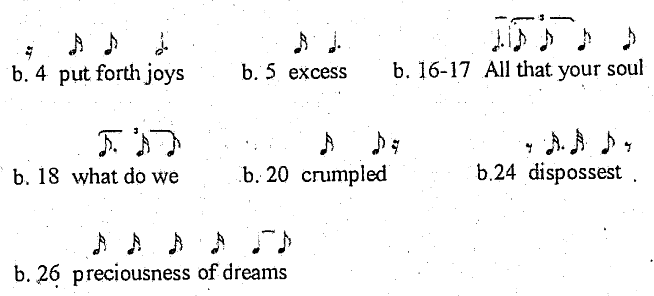
(Van der Watt, 81)
Lengthening of voiced consonants
"The following words containing voiced consonants have been rhythmically prolonged in order to make the word more singable:"
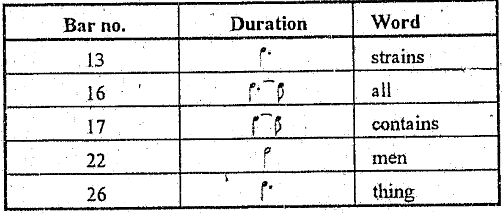
(Van der Watt, 81)
"The tempo indication is Andante quarter note equals c. 60. Tempo deviations are listed below:"
Bar no. |
Deviation |
Bar no. |
Return |
Suggested reason/s |
7¹ |
allargando |
7³ |
poco piu mosso |
Stanza 2 - new atmosphere |
11 |
rall. |
12 |
Tempo I |
Stanza 3 - like opening |
17 |
ritardando |
Anticipate stanza 4 - more pensive |
||
18 |
poco meno mosso |
21 |
a tempo |
Stanza 4 - a tempo emphasizes text |
24 |
molto rit. e dim. |
26 |
a piacere |
Stanza 5 - emphasize with slower tempo |
26 |
ten. |
26 |
rit. |
Emphasis, anticipating the end |
3. Pitch
Intervals: Distance distribution:
Interval |
Upwards |
Downwards |
Unison |
(17) |
|
Second |
46 |
40 |
Third |
14 |
7 |
Fourth |
5 |
7 |
Fifth |
4 |
6 |
Sixth |
3 |
0 |
Octave |
1 |
4 |
"There are 17 repeated pitches (or 11% of the total number), 73 rising intervals (or 47%). The smaller intervals (a third and smaller) account for 124 intervals (81% of the total number) while the larger intervals (fourths and larger) account for 30 (or 19%). Although the smaller intervals dominate significantly in the vocal part, there is vocally taxing interval singing in three consecutive bars: 8³-⁴, 9³-⁴ and 10³-⁴. There are numerous specific setting that require further scrutiny:"
Interval |
Bar No. |
Word/s |
Reason/s |
5th up |
2 |
Call off |
Emphasis |
6th up |
4 |
forth joys |
Reinforce meaning |
8th down 5th up |
8 |
girdled us |
Emphasis |
5th up 4th down |
9 |
glee, Blind glee |
Emphasis |
8th down 4th up |
10 |
ever be |
Emphasis |
5th up |
12 |
Send up |
Reinforce meaning |
6th up |
14 |
Shall rush |
Emphasis |
8th down |
19 |
best That |
Change of register |
6th up |
19-20 |
fresh love |
Emphasis |
8th up |
21-22 |
that men |
Emphasis |
5th up |
23-24 |
of all |
Emphasis |
5th down |
26⁴ |
one thing |
Reinforce meaning |
8th down |
26¹⁷ |
within us |
Reinforce meaning |
Melodic curve
"A melodic curve of the vocal line is represented below. Certain words are indicated to show the relationship between the melodic curve and the meaning:"

(Van der Watt, 83)
Climaxes
"The vocal climaxes are given below:"
Bar no. |
Pitch |
Word |
4 |
F |
joys |
9 |
A |
Blind |
14 |
F# |
rush |
"The single highest pitch (A) occurs in the second stanza which is set in a more excited and spirited atmosphere. The complete text around the climax is:"
"Exalt . . . the hour . . . and fill it full with glee, Blind glee" |
"Blind glee" refers to the sort of delight that does not consider reality seriously but rather focuses on joys, single-mindedly. The composer must be in sympathy with these sentiments to choose that to be the climactic moment."
(Van der Watt, 83)
Phrase lengths
"Phrases coincide with the stanzas and there are mostly sufficient rests to allow for comfortable breathing. Additional breathing should however, be considered in bars 5⁴, 13³ and 26⁶ (after "thing")."
(Van der Watt, 83)
"The song starts in A flat major but takes on a new key for every stanza except the last one. All modulations are summarized below."
Bar no. |
From - To |
Suggested reason/s |
7³ |
A flat - F major |
New stanza (2) |
11³ |
F - A major |
New stanza (3) |
17³ |
A - D major |
New stanza (4) |
"One could refer to the technique used here as extended tonality: there is always a key clearly discernible but a different one every five or six bars."
(Van der Watt, 84)
Chromaticism
"There is very little chromaticism present in the song, making the chromatic occurrences all the more important. There is a D natural in bar 2 which causes chord vii to be minor instead of diminished. The composer here was avoiding the diminished sound in the positive context. The first modulation is so cleverly constructed that it needs no chromatic alteration and the new key appears abruptly without sounding abrupt. The second modulation (b. 11-12) requires an F sharp to establish chord IV of A major at the end of bar 11. In bars 17 - 21 and A sharp appears three times. The first facilitates the modulation to D major (via an invocation of b minor), the second has a secondary dominant function with an irregular resolution on the word "crumpled" and the third, the most interesting, occurs in chord I⁷ (in D major) with the fifth augmented (A sharp) as no accident on the word "dry". The final snatch of chromaticism occurs in the final chord. The modal end to the song, with the surprising final chord (II in D major), sets the text, "is the King" most aptly and leaves the sentiments carried by the poem and the song open-ended."
(Van der Watt, 84)
HARMONY AND COUNTERPOINT
"The harmonic language is largely tonal."
(Van der Watt, 84)
Non-harmonic tones
"Non-harmonic tones are not used in an exceptional manner. There are a number of accented non-harmonic tones used mostly for the sale of heightened dissonance at a particular moment (b. 10¹ and 18¹ appoggiaturas, 13⁴ accented passing note, 2², 25¹ suspensions)."
(Van der Watt, 84)
Harmonic devices
"There are only a few instances of pedalpoint or inverted pedalpoint: bar 1 - A flat (tonic) and the more interesting double pedalpoint in bars 21 - 23 - B (treble clef) D (bass clef). The consistency of the pedalpoint seems to support the undercurrent of the textual meaning a human being dies every moment."
(Van der Watt, 84)
Counterpoint
"There are a few occasions where material is exchanged between piano and voice. These help to construct a subtle unity between the piano and vocal parts:"
Bar 1¹ |
piano treble - 1³ piano bass - 2¹ vocal part |
Bar 8¹ |
vocal part - 8² piano treble |
Bar 12¹ |
piano treble - 12³ vocal part |
Bar 18³ |
vocal part - 19¹ piano treble |
"There are separate indications for piano and voice. Loudness variation is given in the following summary:"

(Van der Watt, 85)
FREQUENCY
"There are 28 indications (piano part) in the 26 bars which means that on average each bar contains more than one indication. In reality some bars do not contain indications while others contain two or more. There are separate indications for the voice: 14 in the 25 bars. The colla voce indication seems to suggest that the voice should follow the dynamic indications given in the piano part, since there are none in the vocal part."
(Van der Watt, 85)
RANGE
"The lowest level indicated in pp and the highest f."
(Van der Watt, 85)
VARIETY
"The indications used are:"

(Van der Watt, 85)
DYNAMIC ACCENTS
"Very few accents are indicated. The only ones attracting attention are the portamento accents in bars 21-23. These mainly emphasize the bass notes where the text refers to "men dying moment after moment". There are also four portamento accents in the extended bar 26 (on "one", "Most", "the King"). These serve the purpose of emphasis."
(Van der Watt, 85)
"The density varies loosely between four and six parts including both piano and voice. The thickness of the piano part is represented in the following table."
(Van der Watt, 85)
No. of parts |
No. of bars |
Percentage |
3 parts |
4 |
15 |
4 parts |
21 |
81 |
5 parts |
1 |
4 |
"Bar 26 (extended bar) is included in the four-part category in spite of the fact that the final cadence consists of five-and six-part chords. The four part-texture dominates and there is only one instance where a three-part bar seems to have direct significance with regard to the meaning, namely bar 25 following the text, "Of all scope disposssest."
(Van der Watt, 86)
"The structure of the song is represented in the following table:"
 (Van der Watt, 86)
(Van der Watt, 86)
"The song is a mixture of varied strophic and through-composed forms."
(Van der Watt, 86)
7. Mood and Atmosphere
"The mood created in the accompaniment and melodic line follows the different stanzas closely and has been carefully and delicately constructed:"
Stanza 1: |
Calm and positive |
Stanza 2: |
Active, exuberant and excited (containing the climax) |
Stanza 3: |
Calm and encouraging, much like the first |
Stanza 4: |
Pensive and sombre - realistic about man's lot |
Stanza 5: |
Inactive, sober and a little melancholic |
General comment on Style
"The song is harmonically conservative with shifting keys, creating very subtle mood changes. Although vocally sympathetic on the whole, the song contains some very taxing vocal passages (mentioned earlier). The absence of a time-signature and bar line in the extended bar 26 creates a most desirable effect: Listlessness, caution, uncertainty. Only sensitive cooperation between the performers will do justice to this extended bar."
(Van der Watt, 86)
Unpublished Analysis Excerpts
The following is an analysis of A Young Man's Exhortation by Mark Carlisle. Dr. Carlisle extended permission to post this excerpt from his dissertation on September 7th, 2010. His dissertation dated December 1991, is entitled:
Gerald Finzi: A Performance Analysis of A Young Man's Exhortation and Till Earth Outwears, Two Works for High Voice and Piano to Poems by Thomas Hardy
This excerpt begins on page eighty-five and concludes on page ninety-six of the dissertation.
Comments on the Poem
""A Young Man's Exhortation" was published in 1922 as part of the collection, Late Lyrics and Earlier, but the poem was actually written in 1867, when Hardy was only twenty-seven years old. This was an emotionally charged year for Hardy; he toyed with the idea of becoming an actor, and actually appeared on the stage of Covent Garden. It was also in 1867 that he fell in love with his cousin, Tryphena Sparks, to whom he soon became engaged. The romantic enthusiasm that affected Hardy during this time is immediately apparent in this poem; it expresses the age-old sentiment of the young -"carpae diem," or "seize the day."
(Carlisle, 85)
"Definitions may be needed for a few of the terms used in this poem: "Exhortation" - a speech intended to advise or urge; "lourings" - scowls, gloomy looks; "dispossest" - dispossessed, deprived of; "aught" - all, anything; "aspect" - air, mien, appearance."
(Carlisle, 85-6)
"This is one of Hardy's more difficult poems to comprehend, especially for American readers and performers. It therefore seems more useful to provide the reader or performer with a "translation" of the poem rather than an explanation of the meaning of the verses, which often results in nebulous and confusing descriptions. This is a version of the poem in contemporary English-one possible interpretation of its meaning that by no means precludes the possibility of others."
(Carlisle, 86)
By determined effort, do not focus on worry.
But instead, express joy, which is better than excess, (since excess often leaves regrets), and charm life's scowls into loveliness. |
Celebrate and enjoy the times that surround us, |
Sing such touching songs that endless thoughts |
For what do we really know? |
If I have seen one thing, |
Comments on the Music
"The first song in this cycle presents much of what is typical in Finzi's compositional style, from an extensive use of non-chord tones to a vocal melody that closely follows the contours of the spoken word and sentence. There are no passages in this song in which harmonic elements are used in new and extraordinary ways, but Finzi's predilection for syncopation, particularly in the vocal line, does provide a considerable measure of rhythmical interest. The basic form of the piece, A-B-A¹-C-codetta, is its most unusual aspect, concluding with an unmetered codetta that is quite atypical in the structure of a solo song. Although there are brief moments of subtle, contrapuntal movement that add interest, the predominant texture remains consistently homophonic. When taken as a whole, the two most important aspects of this song are the text-setting, which at times is remarkable given the complexity of Hardy's poem and the form including particularly the codetta, which provides an uncommon and expressive ending to the song."
(Carlisle, 87)
"The four main sections of the song are differentiated by the following measure numbers: section one, mm. 1-7; section two, mm. 7-11; section three, mm. 12-17; and section four, mm. 18-25. The codetta follows measure 25, and consists of two full staves of unmetered music to end the piece that are marked a piacere for the voice. The sections are made quite clear, primarily through the use of different tempo markings, and by means of changing key relationships, rhythm, dynamics, and even density of texture. This is true of all of the sectional alterations, including the first, which involves an overlapping change in measure 7. Although the sectionalization occurs in the middle of the measure, at this point by changes of key and tempo, and a new emphasis on sixteenth-note rhythmical patterns, the transition to the second section is made easily recognizable."
(Carlisle, 87-8)
"The first section begins with a measure of introduction followed by the entrance of the voice in measure 2. The opening two measures present the primary melodic motive of the song in imitative fashion; two entrances, one in each hand, are heard in measure 1, and the voice provides the third motivic entrance in measure 2. This motive is the only important and consistently used unifying device in the piece, although it is heard for the most part only in the first and third sections. Other examples of its use in the first section include its incorporation into the accompaniment in measures 4, 6, and even the transition to the second section in measure 7. The use of this motive, seen in Example 9, is compositionally the most interesting aspect of the first section."
(Carlisle, 88)
"Example 9. 'A Young Man's Exhortation,' measures 1-2." |
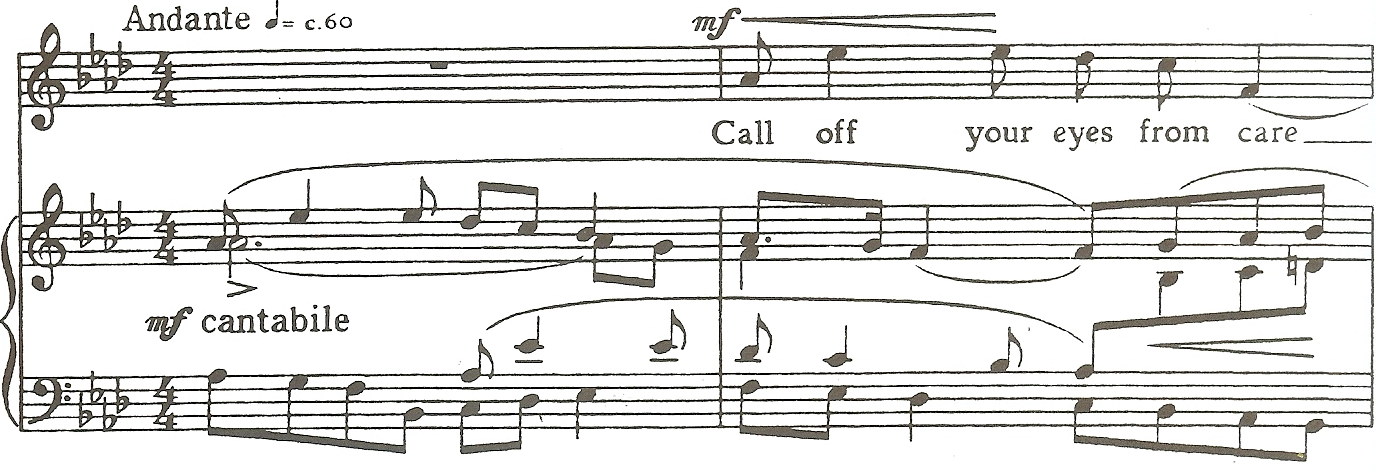
"The initial time signature of 4/4 remains almost constant until the codetta, but the perceived meter is irregular due to word stress and musical accents. The opening key of the piece is A flat major, and no other digressions from this key occur in this section. Some slight rhythmical syncopation in the vocal line from its first entrance does add interest for the listener, but within this opening section it is not a dominant element. The primary motion is that of an eighth-note, with quarter-note movement providing most of the remaining textural framework. While in many instances this pace would create much musical excitement, markings such as Andante and cantabile at the very beginning keep the entire first section in check. The most expressive moment occurs in measure 4, with a leap of a major sixth in the vocal line at the words, 'put forth joy.' This leap, which is then sustained into the next measure, provides all that is musically necessary to appropriately highlight this most forthright of texts. It is clear that Finzi's approach to this opening section was to provide music that presented the listener with a direct, immediate, and honest interpretation of the first stanza without the necessity of compositional 'frills.'"
(Carlisle, 89)
"The second section begins in the accompaniment in the middle of measure 7 by overlapping the vocal line. Abrupt changes of key, tempo, and musical character together represent Finzi's interpretive response to the text, 'Exalt and crown the hour That girdles us.' The music does indeed 'exalt,' with a new key of F major, a more moving tempo as indicated by poco piu mosso, and a texture emphasizing sixteenth-note groupings that add much more energy than found in the previous sections. The vocal line also adds to the excitement by incorporating the previously mentioned sixteenth-note movement, as well as maintaining for a brief period the highest vocal tessitura found in this song."
(Carlisle, 89-90)
"Rhythmical syncopation in the voice line becomes more prominent, if only because of the overall increased sense of musical energy, and represents for the listener and interesting aspect of this second section. Finzi has managed to incorporate into a continued 4/4 meter a text of considerable interpretive and rhythmical complexity, and it is to his credit that it works so very well. The section remains firmly in F major until measure 1, when a clear D-major chord on the third beat of the measure signals the modulation to A major, the primary key of section three."
(Carlisle, 90)
"While these are the most important facets of this section, one other item needs mentioning. A varied and brief form of the opening motive is found in the accompaniment at the beginning of this second section in measure 7. This is the only time any form of the motive is heard outside of the first and third sections, but it nevertheless furnishes an excellent means of sectional 'modulation,' and further serves as means of unification within the song."
(Carlisle, 90)
"The third section begins in measure 12, and returns to most of the same musical characteristics as are found in the first section; imitative entrances of the motive in both accompaniment and voice, and primarily eighth-note, quarter-note notation with a return to an Andante tempo and dolce expressiveness. Even the important leap of a major 6th in the vocal line, this time at the words, 'shall rush upon your tongue,' is heard in measure 14, furthering the similarities between this and the first section. The only primary differences are those of key, which in this case is A major instead of the opening A flat major, and some minor usage of sixteenth-note movement in this section that was formerly nonexistent. Other examples of motivic entrances in this section are heard in the accompaniment in measures 14-15, and again in measure 16-17, the latter providing the last example of the motive heard in this piece. The key of A major remains securely intact throughout this section until measure 17, when a F#-major chord provides the means of harmonic modulation to the key of B minor, the predominant key of the forth section."
(Carlisle, 90-1)
The fourth and last section begins in measure 18, the only measure outside of the codetta that contains a time signature different than the opening 4/4. The 5/4 time signature in measure 18, along with a change of tempo (poco meno mosso), ushers in an entirely new musical character, one much more contemplative in nature that previously heard. The key of B minor continues throughout the fourth section, lending most of this music a more introspective air. This corresponds beautifully to the poetry, which during this section assumes a more resigned, highly melancholy character. The vocal line maintains a relatively low tessitura that enhances the sense of introspection melancholy, and allow the listener in this instance to concentrate on what is being communicated rather than how it is being communicated."
(Carlisle, 91)
"Texture is fairly light throughout the section, although a full, homophonic structure in the accompaniment beginning in measure 21 gives the illusion of increased textural density. However, this structure is used mostly to provide a strong interpretive foundation for such an important poetic thought as 'And that men moment after moment die, Of all scope dispossest.' This poetic line and corresponding music bring the section to a close in measure 25, at which point is found both a fermata and double bar line."
(Carlisle, 92)
"It is following the double bar line and fermata that Finzi has chosen to finish the piece with a most unusual, unmetered codetta of two full staves."
(Carlisle, 92)
"Example 10. 'A Young Man's Exhortation,' codetta." |
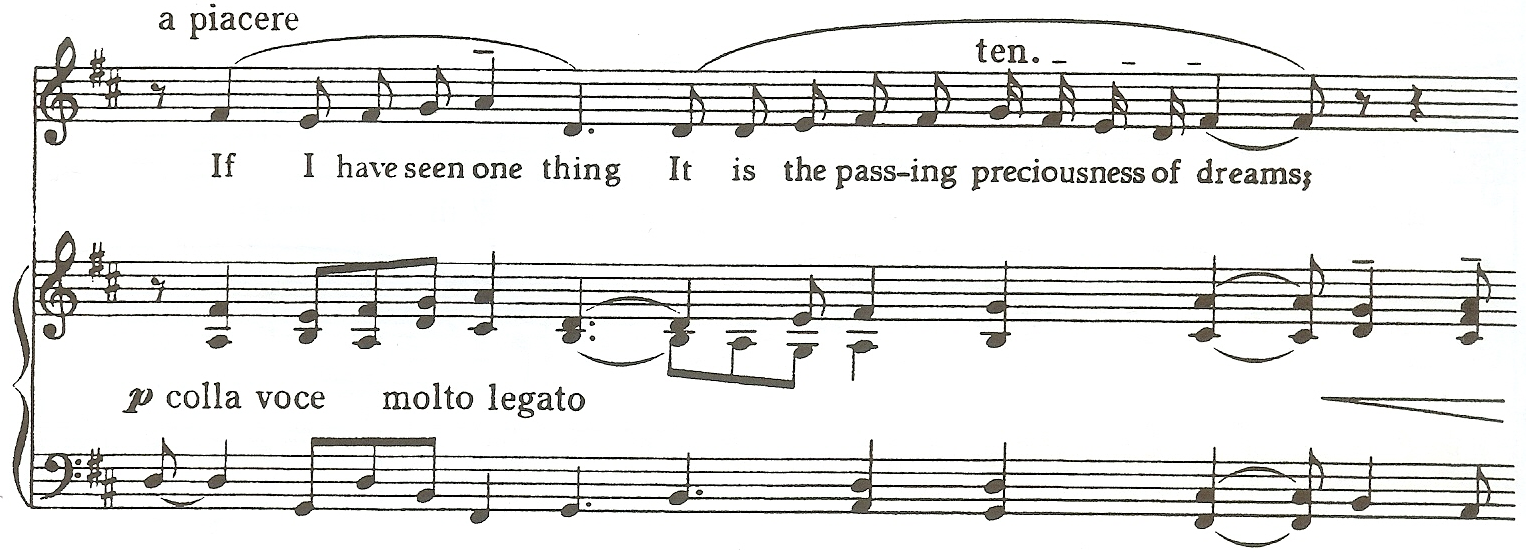
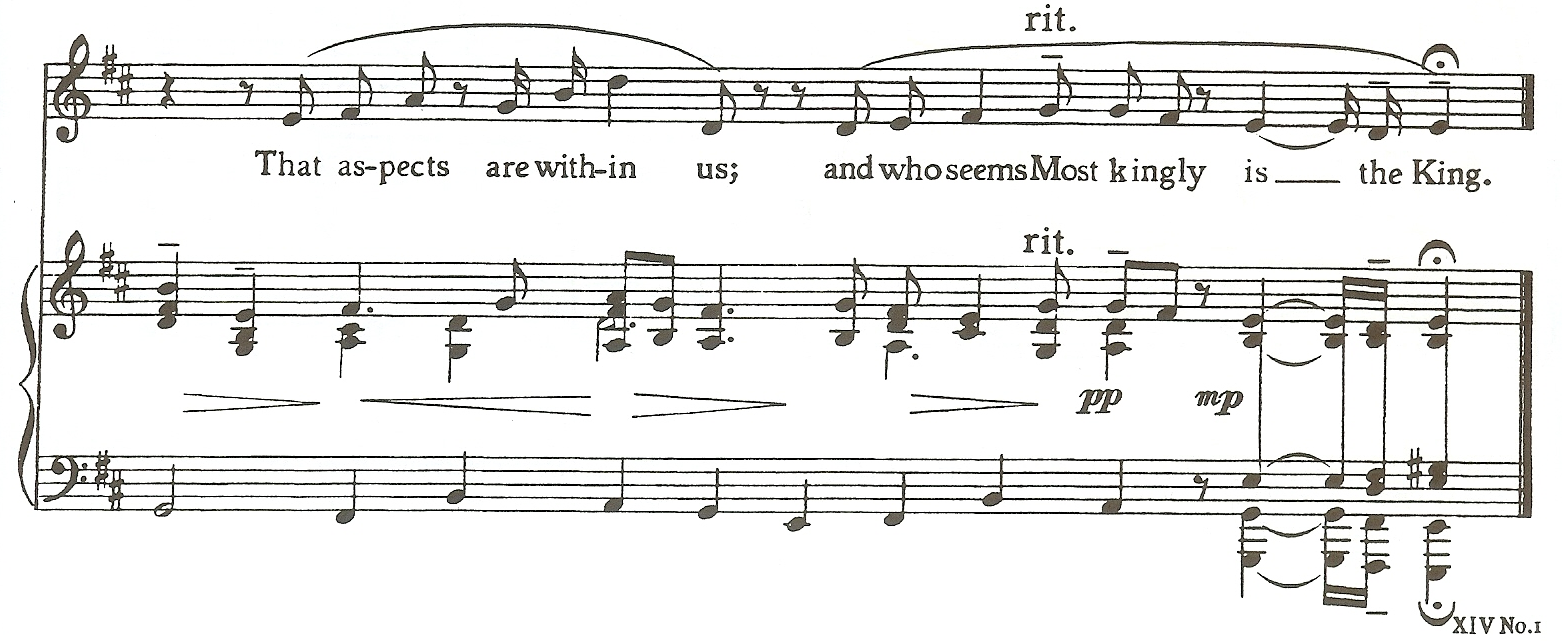
"This is a rare occurrence in the realm of the art song, but it creates a wonderfully expressive ending to the piece. Although there is no strong harmonic transition between measure 25 and 26, the music modulates subtly but inevitably from B minor to D major by the continuation of a downward descent in the accompaniment from F# to E to D at the beginning of the codetta. Once in place, the key of D major provides most of the harmonic interest until the final three chords, at which time an unprepared and immediate shift to an E-major chord ends the song. The tessitura of the vocal line is at its lowest level during the codetta, again as in the fourth musical section placing the emphasis and importance squarely on the poetry itself rather than how the poetry is communicated."
(Carlisle, 93)
"The texture during this codetta is generally light, with the exception of the final three chords, and for the most part homophonic in structure. There is a small amount of syncopation in the accompaniment, but given the lack of any bar lines or meter signs, the effect of this syncopation is greatly reduced; its intent is to provide a measure of internal rhythmical energy rather than rhythmical interest. While the final three chords do present a most unusual ending to the song, their expanding texture and harmonic emphasis on a simple I-V-I progression are indicative of the strength Finzi wanted to supply to the powerful last words of the poem, 'and who seems Most kingly is the King.' It is quite apparent that Finzi found these last words of the poem something very special, and chose this unfettered codetta format in the belief that it would allow for the most natural and unaffected means of communicating that portion of the poem most important to him."
(Carlisle, 93-4)
Comments about Performance
"Much mention has already been made of the several expressive and tempo markings throughout this song. There are more of such markings in this piece than are commonly found throughout Finzi's vocal literature, indicating his desire for a more strictly defined performance than is often the case. While some latitude in actual tempo and phrasing should certainly be permitted, it is imperative that in this song the performers observe the markings with considerable accuracy."
(Carlisle, 94)
"The opening tempo marking of [quarter note] = c. 60 is very appropriate, as are the dynamic markings in the first section. No unusual degree of dynamic contrast is necessary in this opening section, as the natural shape of the vocal lines will provide all that is needed. The allargando and poco piu mosso markings in measure 7 should of course be closely observed, and a tempo marking of [quarter note] = c. 65 is suggested as at least a starting point for the tempo of the second section. It allows for more energy in the section, but is not so fast as to make adequate enunciation of the text difficult. The beginning of the third section is a return to that of the first section, and again the dynamic contrast will be evident if the singer simply follows the general contours of the line. The ritardando and poco meno mosso markings in measures 17 and 18 indicate still another change, and a tempo marking of [quarter note] = c. 45 is suggested for the beginning of the fourth section. While this is perhaps a more dramatic change than occurred between the first and second sections, it nevertheless seems quite appropriate for the profundity of the poetry at this point. Also, although a tempo is written in measure 21, it does not at all seem appropriate that this passage should return to the opening tempo of the piece. Rather, a tempo marking of [quarter note] = c. 50 seems much more in line with the overall character of this section, and allows for a much smoother and more graceful rendering of the molto ritardando that precedes the codetta. There are few dynamic markings in the fourth section, but its character implies a dynamic range of approximately mezzo-piano, in order to most effectively communicate the introspective text at this moment."
(Carlisle, 94-5)
"The codetta contains such markings as a piacere, colla voce, and molto legato. There are no strict tempo or dynamic markings in the vocal line, though piano and pianissimo markings are seen briefly in the accompaniment. The most important task for the performers at this point is to communicate the poetry with as much depth of understanding as is possible, and yet do so in a natural and unaffected manner; the text speaks quite well enough for itself. A tempo of [quarter note] = c. 40 seems a good place to start for the codetta, with whatever adjustments seem necessary to meet the individual needs of different performers. The tessitura is somewhat low for the tenor voice, so a slightly higher dynamic range than pianissimo might ne needed. The singer should always keep in mind the sensitivity that is needed at this point, however, and let this be his first guide for an expressive rendering of the final text."
(Carlisle, 95)
"Overall, this is not a particularly difficult song to sing from the standpoint of range or tessitura; much of it should be quite comfortable for even a young tenor voice. Passages in the second section, which contains the highest tessitura found in the song, might be cause for some concern, but they are still not excessively demanding. There are no sustained notes, and all of the lines move rather quickly through the most troublesome parts of the tenor voice."
(Carlisle, 96)
"It is, on the other hand, the inherent complexity of the poem, and the relatively high level of interpretive skills that are necessary to effectively communicate that complexity, that present the most problems for the performer. A fairly strong literary background is essential if the poem is to be fully understood, without considering the potential musical difficulties to overcome, especially in the areas of rhythm and phrasing. Therefore, it is a song most strongly recommended for the graduate-level tenor who can bring to a performance a generally higher level of technical, musical, and literary sophistication than found at an earlier age. However, for a gifted upper-level undergraduate student who finds a particular affinity with the unique combination of Finzi and Hardy, it can most certainly be a very enjoyable and challenging addition to their vocal repertoire."
(Carlisle, 96)
Unpublished Analysis Excerpts
The following is an analysis of A Young Man's Exhortation by Leslie Alan Denning. Dr. Denning extended permission to post this excerpt from his dissertation on September 8th, 2010. His dissertation dated May 1995, is entitled:
A Discussion and Analysis of Songs for the Tenor Voice Composed by Gerald Finzi with Texts by Thomas Hardy
This excerpt begins on page fifty and concludes on page fifty-three of the dissertation.
"The first song in A Young Man's Exhortation bears its name and comes from a Hardy poem written in 1867 in Westbourne Park Villas: the manuscript lies in Dorset County Museum. Published in his Late Lyrics, Hardy perceived this collection as his last work. In its preface he addresses the perceived pessimistic quality of his work in great length:"
(Denning, 50)
"For - while I am quite aware that a thinker is not expected, and, indeed, is scarcely allowed, now more than heretofore, to state all that crosses his mind concerning existence in this universe, in his attempts to explain or excuse the presence of evil and the incongruity of penalizing the irresponsible - it must be obvious to open intelligences that, without denying the beauty and faithful service of certain venerable cults, such disallowance of "obstinate questionings" and "blank misgivings" tends to a paralyzed intellectual stalemate... And what is today alleged to be pessimism is in truth, only such "questionings" in the exploration of reality, and is the first step towards the soul's betterment and the body's also." (Hardy, 557) (Denning, 50) |
"Hardy's five verses characterize the views of a young man with a zest for life who implores the reader to cast off worry and seek joy and gratification, to seize the day. The third verse of the poem is transitional in that verses four and five remind us that time and dreams are fleeting and that we all die with nothing, a preoccupation of both Finzi and Hardy. While pessimism reigns here, the message given at the end of the poem is that it is within each of us to fulfill our dreams and to be perceived as we wish."
(Denning, 50-1)
"Finzi responds lyrically to Hardy's text. The influence of Bach dominates in the beginning of this song with contrapuntal imitation in the piano part giving the impression that what awaits is a closed form piece (musical Example 1)."
(Denning, 51)
"Example 1: A Young Man's Exhortation, Measures 1-3." |
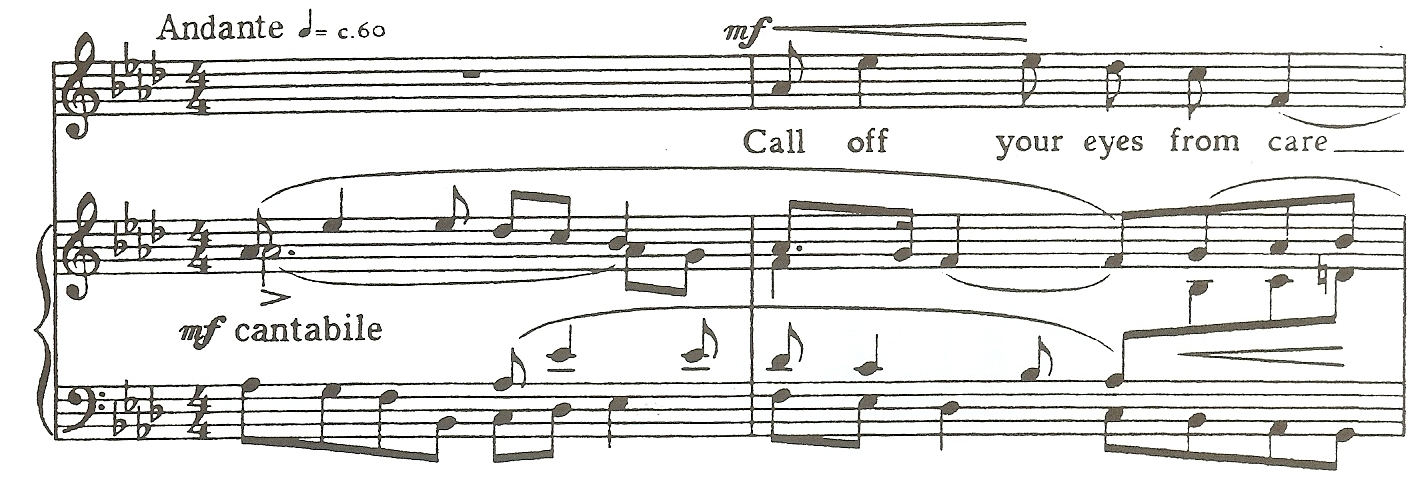
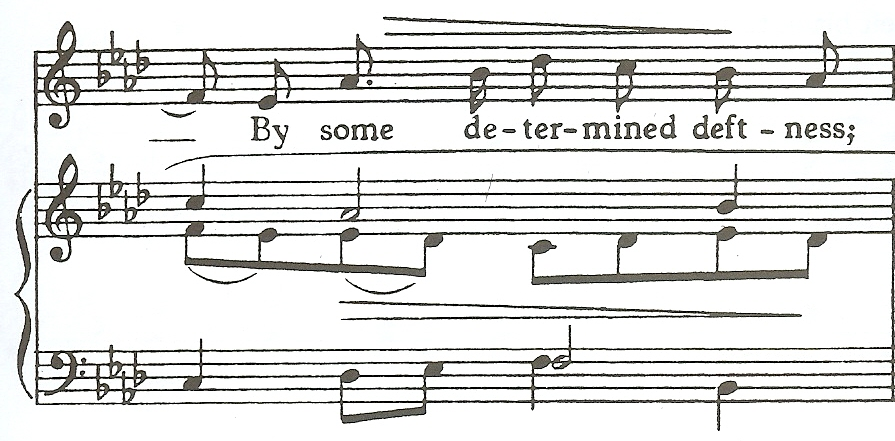
"Having begun in A-flat, Finzi anticipates the second verse with an early and abrupt modulation into F. What follows is a joyous revelry, painting the text 'exalt and crown the hour.' Evident here is Finzi's fondness for mediant and submediant chords, especially when in first inversion (musical Example 2)."
(Denning, 51)
"Example 2: A Young Man's Exhortation, Measures 7-9." |

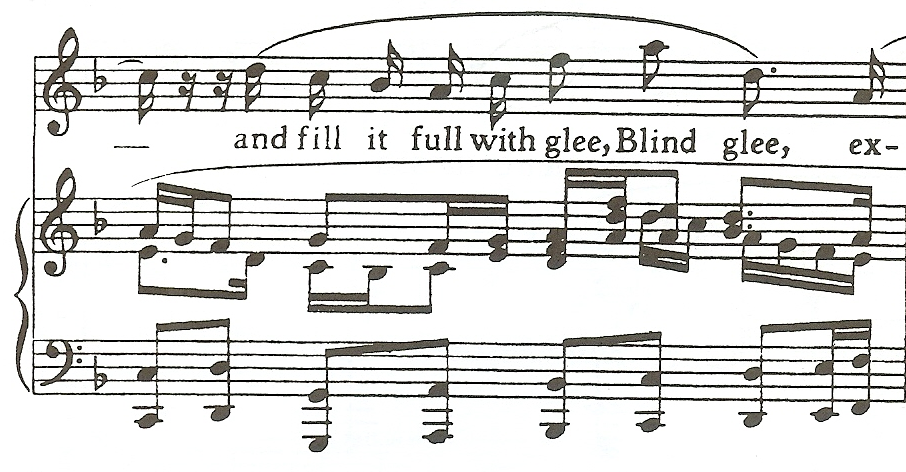
"The transition into verse three is better prepared with a rallentando diminuendo bringing the piece back to its original tempo with altered chords easing the song into A flat-major once again. This section returns to the feel of the first verse but with a simpler accompaniment. The rallentando diminuendo can be most effective here in measure eleven, especially when taken to excess by singer and pianist. A ritardando prepares the fourth verse which begins in a quasi-recitative style in 5/4 meter. At the beginning of this verse Finzi has written sufficient expressive rhythmic devices into the piece. To take too much additional liberty here destroys the rhythmic structure. This must be preserved since measure twenty-two returns the piece to the original tempo employing a march-like bass line reminiscent of Gustav Holst's heavy chordal writing, symbolizing time marching forward (musical Example 3)."
(Denning, 52)
"Example 3: A Young Man's Exhortation, Measures 21-22." (Denning, 52) |

"The fourth stanza dissolves into a large ritard with a fermata over the double bar closing this section. When done carefully, observing this fermata adds great intensity to the performance and focusses attention on the last verse taken 'a piacere.' The accompaniment is simple here as the force of the words receive due attention and the composer closes the piece in an uplifting E-major chord, perhaps an omen of the future's promise. Obviously this song received great attention from Finzi and show many of the craftsman's characteristic procedures. The tempo marking for this piece is andante (quarter note equals c. 60). This performer suggests a slightly faster tempo so as to capture the excitement and youth of the opening text. At the given tempo, the character may seem too self-satisfied."
(Denning, 52-3)
Unpublished Analysis Excerpts
The following is an analysis of A Young Man's Exhortation by Carl Stanton Rogers. Permission to post this excerpt was extended by Dr. Rogers' widow, Mrs. Carl Rogers on March 1st, 2011. Dr. Rogers' thesis dated August 1960, is entitled:
A Stylistic Analysis of A Young Man's Exhortation, Opus 14, by Gerald Finzi to words by Thomas Hardy
This excerpt begins on page fourteen and concludes on page twenty-one of the thesis. (Rogers, 14-21)
Part I, Number 1
"A Young Man's Exhortation"
Two general characteristics of this song are:
(a) The text setting is strictly syllabic throughout.
(b) It consists of five stanzas; the form is A B A¹ C D.
Were it not for a recurrence of one of the principal themes of the song in the third section, it could be called through-composed. This principal theme is stated in the first measure (of the piano accompaniment). Two beats later, this same theme appears in stretto form in another voice, as shown in Figure 1.
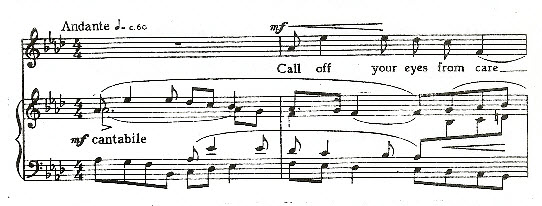
Fig. 1 -- "A Young Man's Exhortation," measures 1 and 2, principal theme
and its appearance in stretto form.
The mood of this first section, which extends through the second beat of measure seven, is lyrical and rather cantabile, as is indicated at the beginning. The principal theme shown in Figure 1 occurs two more times in the piano accompaniment before the end of the first section (measures four and six).
On the second beat of measure seven a modulation leads into Section B with its rapidly moving contrapuntal lines and strongly marked passages in the bass, thus resembling a trio sonata of the Baroque period, in which two upper parts moving in contrapuntal lines are supported by a figured bass part, as shown in Figure 2. It will be noted that during measures eight, nine, and ten, there is almost no contrapuntal activity occurring in the bass part of the accompaniment. At this point, the treble voices hold the contrapuntal interest.

Fig. 2 -- "A Young Man's Exhortation," measure 8 and 9, contrapuntal lines of Section B.
In measure eight, the opening notes of the voice part are imitated in stretto fashion in the highest voice of the piano accompaniment. The mood of the text in this section is one of a n excited, active nature, as shown in the words "Blind glee," and the extremely active contrapuntal lines serve to enhance this mood.
Section A¹ begins in measure twelve. Again, the principal theme appears, as was shown first in Figure 1. This time the theme is stated first in the piano accompaniment and then is imitated in stretto form in the vocal line. This point is demonstrated in Figure 3.
This section ends with the beginning of measure eighteen. In measures fourteen-fifteen and sixteen-seventeen, the principal theme shown in Figures 1 and 3 has two more occurrences in the piano accompaniment in counterpoint to other melodic material in the vocal line.
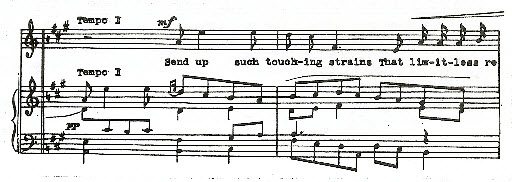
Fig. 3 -- "A Young Man's Exhortation," measures 12 and 13, recurrence of principal theme in stretto form.
Section C (measures eighteen to twenty-five) contains at least two items of interest. Measure twenty contains a harsh dissonance between the vocal line (second beat--A-natural) and the piano accompaniment (A-sharp), as shown in Figure 4.
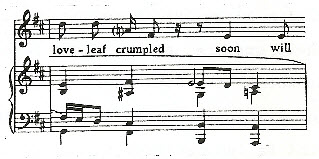
Fig. 4 -- "A Young Man's Exhortation," measure 20, dissonance between vocal line and accompaniment.
That this particular dissonance would be difficult to perform, or at any rate, ineffective, seems to be borne out by the fact that the note in its chromatically unaltered form in the vocal line is approached and left disjunctly. The dissonance occurs on the word "crumpled," a word denoting destruction or collapse.
Figure 5 shows a deliberate instance of word painting through the devices used in the piano accompaniment.
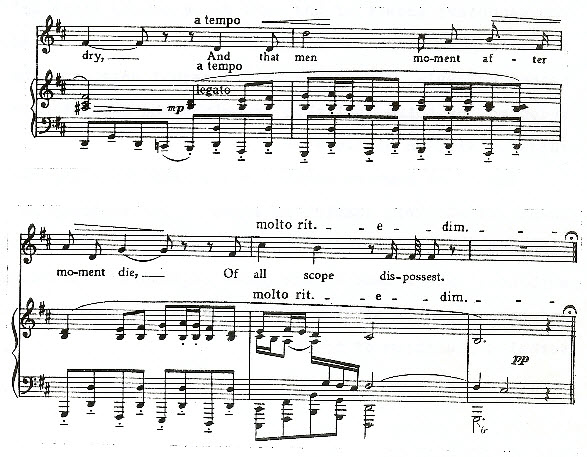
Fig. 5 -- "A Young Man's Exhortation," measures 21, 22, 23, 24, 25, word painting in piano accompaniment.
Here the relentless approach of death, as mentioned in the text, is shown by:
(a) The constant reiteration of a B-natural in the lower treble voice of the accompaniment.
(b) The repetition of the principal melody in the accompaniment.
(c) The ostinato-like bass figurations.
That the composer pays a great deal of attention to the setting of individual words is shown in his setting of the word "dispossest" in measure twenty-four (Figure 5). Here the secondary accent of the word falls on the first syllable, which is given a dotted sixteenth note. The unaccented, or second syllable, receives a thirty-second note, and the accented, or third, syllable, receives the largest note value of all, an eighth note.
The final section begins immediately following measure twenty-five. This section is shown in its entirety in Figure 6. The text at this point becomes musing or philosophical. The intent of the meter signature is abandoned, and bar lines are eliminated, providing the opportunity for verbal declamation of the text.
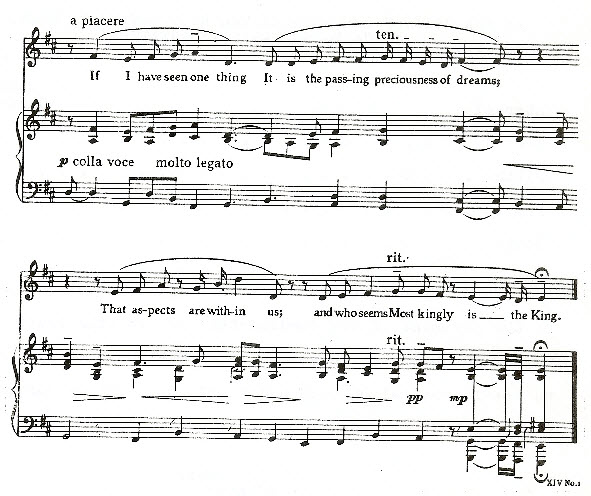
Fig. 6 -- "A Young Man's Exhortation," Section D, elimination of bar lines.
The harmonic structure in this song is largely tertian. An analysis has been made of Section D from the point of view of the fundamental bass, as shown in Table I.
TABLE I
AN ANALYSIS OF THE FUNDAMENTAL ROOT MOVEMENT, SECTION D
OF "A YOUNG MAN'S EXHORTATION"
Interval |
Number of Occurrences
|
|
Second |
. . . . . . . . . . . . . . . . . . . . . . . . . . . . . . . . . . . . . . . . . . . . . . . . |
14 |
Fifth |
. . . . . . . . . . . . . . . . . . . . . . . . . . . . . . . . . . . . . . . . . . . . . . . . |
4 |
Fourth |
. . . . . . . . . . . . . . . . . . . . . . . . . . . . . . . . . . . . . . . . . . . . . . . . |
3 |
Sixth |
. . . . . . . . . . . . . . . . . . . . . . . . . . . . . . . . . . . . . . . . . . . . . . . . |
2 |
Thus, it can be seen here that approximately 60 percent of the movement of the fundamental bass in this section is by the interval of the second, a condition which is contrary to traditional eighteenth and nineteenth century harmonic practice.
The preceding was an analysis of A Young Man's Exhortation by Carl Stanton Rogers. Permission to post this excerpt was extended by Dr. Rogers' widow, Mrs. Carl Rogers on March 1st, 2011. Dr. Rogers' thesis dated August 1960, is entitled:
A Stylistic Analysis of A Young Man's Exhortation, Opus 14, by Gerald Finzi to words by Thomas Hardy
This excerpt began on page fourteen and concluded on page twenty-one of the thesis.
Unpublished Analysis Excerpts
The following is an analysis of A Young Man's Exhortation by Michael R. Bray. Dr. Bray extended permission to post this excerpt from his thesis on March 19th, 2011. His thesis dated May 1975, is entitled:
An Analysis of Gerald Finzi's "A Young Man's Exhortation"
This excerpt begins on page thirteen and concludes on page seventeen of the thesis.
(Bray, 13-7)
A Young Man's Exhortation
|
|
|
|
|
|
|
|
|
|
|
|
|
|
|
|
|
|
|
|
"A Young Man's Exhortation" in the original manuscript was entitled "An Exhortation." (Purdy, 218) Presumable, Hardy exhorted himself on the basis of ideas from the classics, are galleries, the theatre, and poetry. As earlier mentioned, he had been accustomed to shutting himself in his London room every evening from six to twelve. Under such conditions, he sought safety and comfort in "the passing preciousness of dreams" - dreams that tried to rise above the materialism of 1860 London. Examination of the poem reveals the sensitive artistic and technical fortes of both poet and composer.
The poem itself is composed of five subdivisions identical in syllabic structure. Each subdivision or verse contains two six syllable lines and two with ten. But, a sensitive analysis cannot stop here. A larger, more subtle breakdown lies intrinsically hidden within the poem. The first three verses, with their respective directives (Call off, Exalt and Crown, Send up) are explicitly a young man's exhortations. Numerous metaphors amply provide textural interest while the orientation of the exhortations toward the second-person provides the distinction between the contrasting sections. The last two verses, in their first-person use of the personal pronouns I, we, and us, are much more reflective in nature. The opening question of the second section (For what do we know best?) quickly foreshadows this inward reflection. Using this analytical delineation, Finzi gave the poem musical shape.
Introduced in trumpet fanfare fashion, the melodic strength of the ascending fifth seemingly demands you to "Call off your eyes from care / By some determined deftness;" -
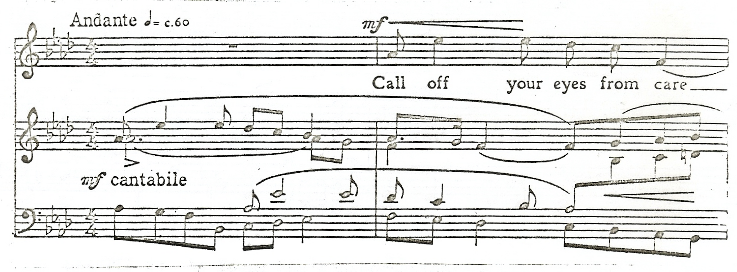
EXAMPLE 1: "A Young Man's Exhortation," measures 1-2.
- an invitation that bids you relax and absorb the imagery laden cycle to follow.
The melody, beginning in A [flat] Major, has the wide range of a thirteenth, and demands a vocal sensitivity to extended phrasing, contrasting dynamic sections, and the poetic impact. The opening melodic leap of a fifth, although heard vocally only twice, appears seven times in the first seventeen measures providing a basis for motivic unity.
In light of the power of the text, Finzi deemed it necessary to give the second verse added emphasis by employing a contrasting melodic line, new rhythmic vitality, and a common chord modulation to F Major. Very typical of Finzi at this point are his marked allargandos, rallentandos, or ritardandos when approaching a modulation and/or a differing textural interpretation. Notice also the precision with which
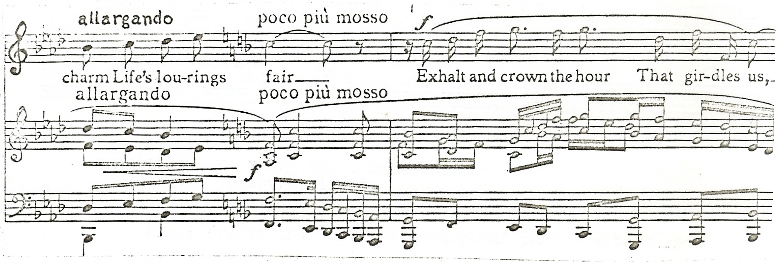
EXAMPLE 2: "A Young Man's Exhortation" measures 7-8.
the text is fitted to both rhythmic and melodic curves. In reiteration of the "fanfare" theme, the third verse (now in A Major) leads into the contrasting section.
As the mood of the poem turns inwardly reflective, so too does the musical portrayal. Thus far, the musical lines have briskly walked along in constant eighth-note motion. But, as the ritardando into the key change virtually stops the eighth-note motion, notice the stylistic transition. The introduction of a 5/4 measure coupled with static quarter and half-note motion moving in accordance with a quasi-recitative singing style, fully realizes the distinctions between sections.
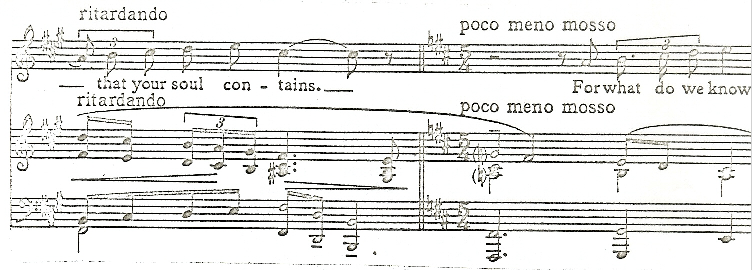
EXAMPLE 3: "A Young Man's Exhortation" measures 17-18.
Finzi treats the "loveleaf crumpled" phrase with a great deal of feeling. However, as quickly as the crumpled loveleaf dries and heals, so does man "moment after moment die." To paint the picture still clearer, Finzi marches man moment after moment in an eighth-note figure indicative of a marching cadence (![]() ) until the final truth is revealed- that no man escapes death. All motion poignantly ends here.
) until the final truth is revealed- that no man escapes death. All motion poignantly ends here.
In spite of all the negative comments Hardy received about his "perverse and gloomy" outlook, the ending phrases of this poem are its strength, salvation and hope. With the same tenderness and sensitivity, Finzi chose to set the final phrases in a recitative open to the interpretive discretion of the performer (a piacere). The final phrase, as complemented by the rich ringing E Major sonority, could even make a believing "King" out of the lowliest peasant aspiring land ownership.
The preceding was an analysis of A Young Man's Exhortation by Michael R. Bray. Dr. Bray extended permission to post this excerpt from his thesis on March 19th, 2011. His thesis dated May 1975, is entitled:
An Analysis of Gerald Finzi's "A Young Man's Exhortation"
This excerpt began on page thirteen and concluded on page seventeen of the thesis.
(Bray, 13-7)
Unpublished Analysis Excerpts
The following is an analysis of A Young Man's Exhortation by John Keston. Mr. Keston extended permission to post this excerpt from his thesis on September 30th, 2011. His thesis dated May 1981, is entitled:
Two Gentlemen from Wessex: The relationship of Thomas Hardy’s poetry to Gerald Finzi’s music.
This excerpt begins on page forty-three and concludes on page fifty of the thesis. To view Mr. Keston's Methodology please refer to: Methodology - Keston.
PART I
1 A Young Man's Exhortation
|
|
|
|
|
|
|
|
|
|
|
|
|
|
|
|
|
|
|
|
POETIC METER
In the poem "A Young Man's Exhortation" Hardy has used iambic trimeter followed by pentameter. Each of the five stanzas is constructed as follows: Lines one and four are rhyming trimeter having three feet; lines two and three rhyming pentameter having five feet.
RHYTHMIC RELATIONSHIP
The musical meter of the song is duple. As with many Finzi songs, "A Young Man's Exhortation" has in its rhythms much syncopation. This forces the singer to get on with the text, allowing little release; thus heightening the dramatic content of the poetry. There is a great naturalness to the rhythmic make-up of each song with the accents falling on the right words to be stressed. In the first line of "A Young Man's Exhortation": "call off your eyes from care;" after a one bar introduction in four four time, Finzi immediately introduces a syncopation. The word "call" receives an eighth note, "off" a quarter note stressing "off" as one of the three important words in this line. Another word in the line, "care" receives the stress of a quarter note and carried over to a tied eighth-note in the next bar continues the syncopation. If one reads the text rhythmically one is able to appreciate immediately what Mrs. Finzi means when she says that her husband let the words dictate the rhythms and intervallic structure of the poetry. (Bailey, 453-4)
TRANSLATION
In the First stanza of "A Young Man's Exhortation" Hardy is exhorting himself to: decide what to do and stop worrying, be joyful to excess and charm life's gloom away to happiness.
Second stanza: Praise the moment and fill it with blind happiness that excels anything imaginable, which would be impossible if one were heedful of it.
Third stanza: Emote the numberless thoughts of the mind, making them verbal to express what is in the soul.
Fourth stanza: What we understand naturally without being told is that a new love abused will soon dry up and men die daily, dispossessed of all they ever had.
Fifth stanza: If I understand anything it is that one should dream; the visions are within us and one who believes he is king is a king.
HARDY AFFECTED BY LIFE IN LONDON
The manuscript to this poem was originally entitled "An Exhortation." In the 1860's Hardy was used to shutting himself up in his lodging in Westbourne Park Villas, London, from six until twelve in the evening reading the classics. He visited art galleries, the theatre, and read poetry, mostly romantic. He was repelled by the realism of some theatrical productions he saw in London, and was glad to get back to Dorset in 1867. His health had suffered in the city and he had had his work rejected by London editors. Back in Dorset he exhorted himself to dream and it was here that he wrote Under the Greenwood Tree. (Bailey, 453-4)
The preceding was an analysis of A Young Man's Exhortation by John Keston. Mr. Keston extended permission to post this excerpt from his thesis on September 30th, 2011. His thesis dated May 1981, is entitled:
Two Gentlemen from Wessex: The relationship of Thomas Hardy’s poetry to Gerald Finzi’s Music.
This excerpt began on page forty-three and concluded on page fifty of the thesis.


